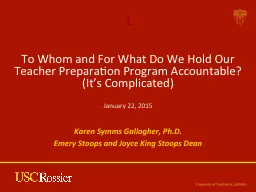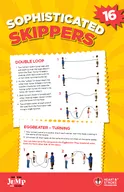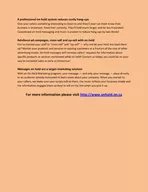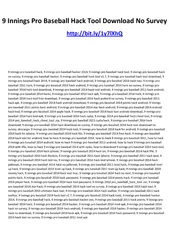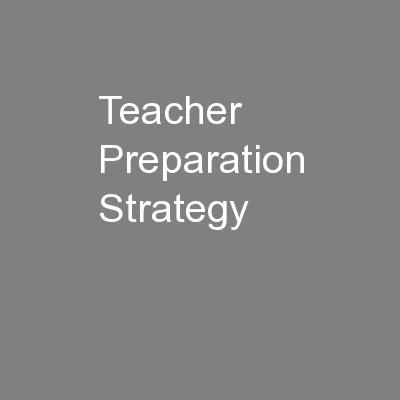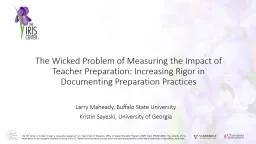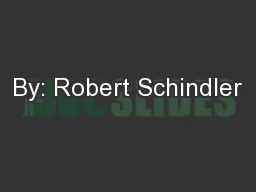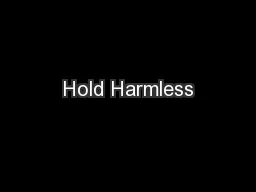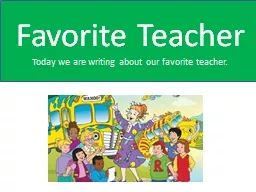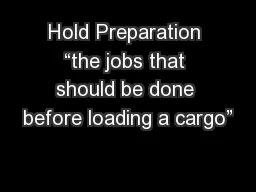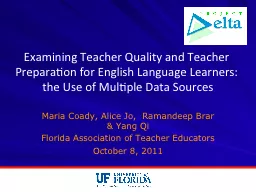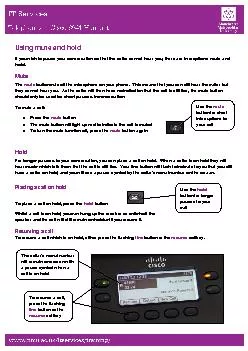PPT-To Whom and For What Do We Hold Our Teacher Preparation Pro
Author : karlyn-bohler | Published Date : 2017-01-13
Its Complicated January 22 2015 Karen Symms Gallagher PhD Emery Stoops and Joyce King Stoops Dean 1 Mission To improve learning in urban education locally nationally
Presentation Embed Code
Download Presentation
Download Presentation The PPT/PDF document "To Whom and For What Do We Hold Our Teac..." is the property of its rightful owner. Permission is granted to download and print the materials on this website for personal, non-commercial use only, and to display it on your personal computer provided you do not modify the materials and that you retain all copyright notices contained in the materials. By downloading content from our website, you accept the terms of this agreement.
To Whom and For What Do We Hold Our Teacher Preparation Pro: Transcript
Download Rules Of Document
"To Whom and For What Do We Hold Our Teacher Preparation Pro"The content belongs to its owner. You may download and print it for personal use, without modification, and keep all copyright notices. By downloading, you agree to these terms.
Related Documents

